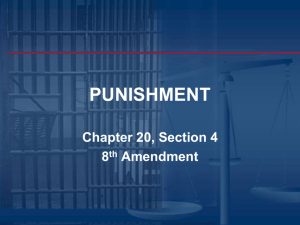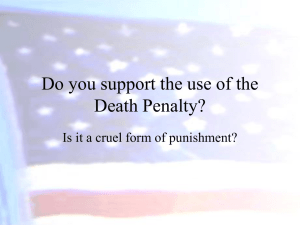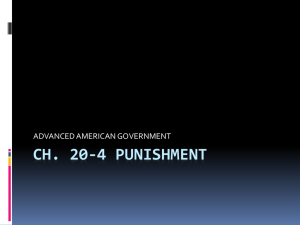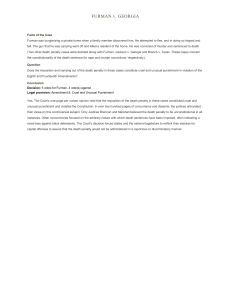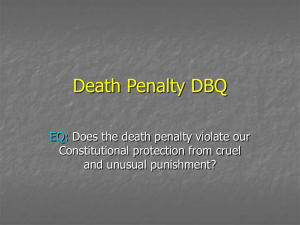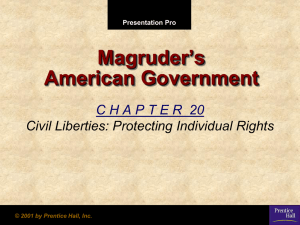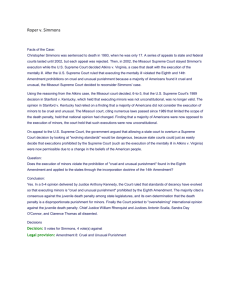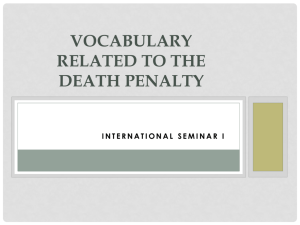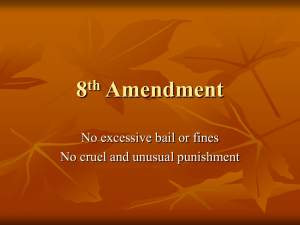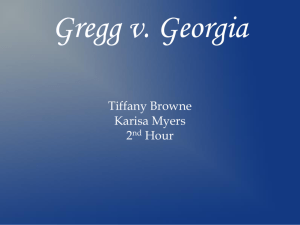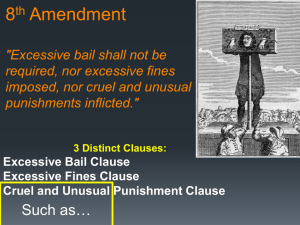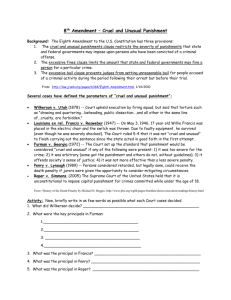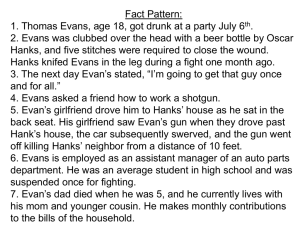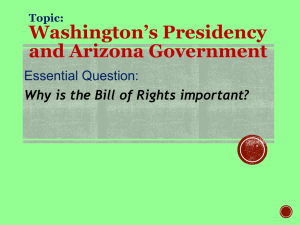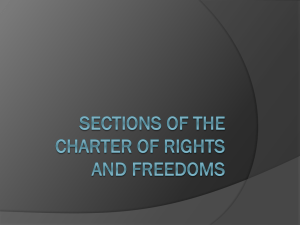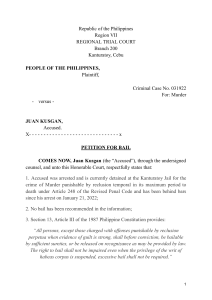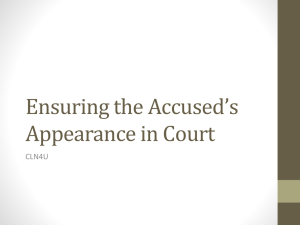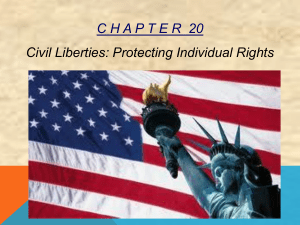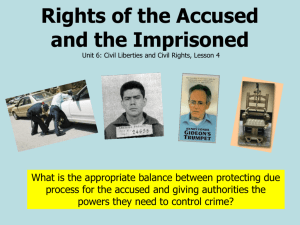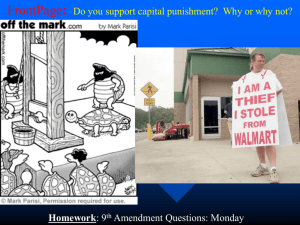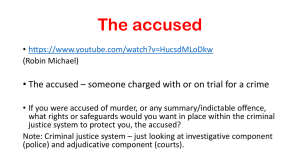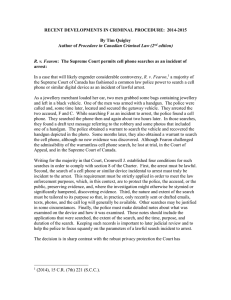Cruel and Unusual Punishment
advertisement
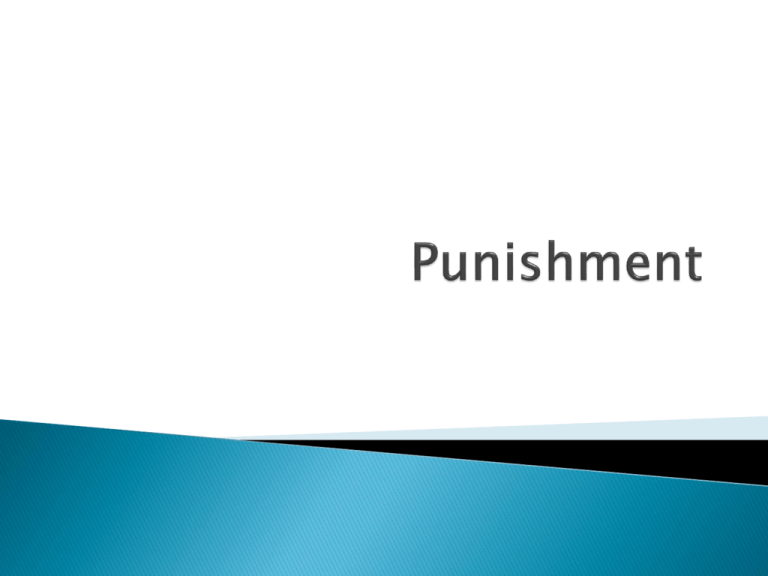
Bail is a sum of money that the accused may be required to deposit with the court as a guarantee that he or she will appear in court. The Constitution does not guarantee that all accused persons are entitled to bail, just that the amount of the bail cannot be excessive. Preventative detention is a law that allows federal judges to order that accused felons be held without bail if there is a danger that the person will commit another crime if released. Critics think preventative detention amounts to presuming the accused guilty. The Court upheld the law in United States v. Salerno, 1987. The 8th Amendment also forbids “cruel and unusual punishment.” The Supreme Court extended the provision to the States in Robinson v. California, 1962. The 8th Amendment is intended to prevent, in the Court’s opinion, barbaric tortures such as drawing and quartering and other excessively cruel punishments. The Supreme Court held that defining narcotics addiction as a crime, rather than an illness, was cruel and unusual in Robinson v. California, 1962. In Estelle v. Gamble, 1976, it ruled that a prison inmate could not be denied medical care. However, generally the Court has not found many punishments to be cruel and unusual. The Supreme Court voided capital punishment laws in the early 1970s because it felt that the punishment was applied “capriciously” to only a few convicts, often African American or poor or both. However, in 1976, the Court held for the first time that a new law which instituted the death penalty was NOT unconstitutional. The new law provided for a two-stage trial process. One trial would determine guilt or innocence, and a second hearing would decide whether the death penalty was warranted. The Court later restricted the use of the death penalty to cases where the victim died.
